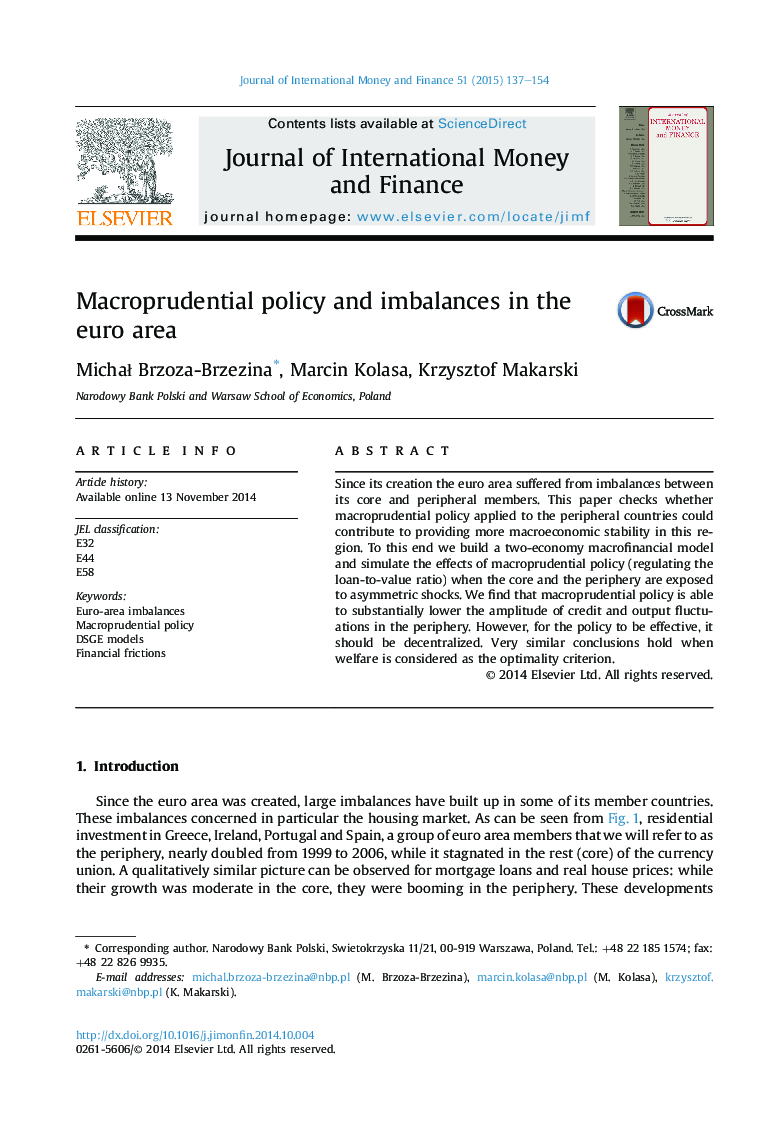| Article ID | Journal | Published Year | Pages | File Type |
|---|---|---|---|---|
| 963939 | Journal of International Money and Finance | 2015 | 18 Pages |
•We model a two-region monetary union with core (big) and periphery (small) hit by asymmetric shocks.•Loss of independent monetary policy destabilizes the periphery.•Macroprudential policy is able to make up for the loss of monetary autonomy in the periphery.•This is true for output and credit volatility as well as welfare being the optimality criteria.•However, only decentralized macroprudential policy is effective.
Since its creation the euro area suffered from imbalances between its core and peripheral members. This paper checks whether macroprudential policy applied to the peripheral countries could contribute to providing more macroeconomic stability in this region. To this end we build a two-economy macrofinancial model and simulate the effects of macroprudential policy (regulating the loan-to-value ratio) when the core and the periphery are exposed to asymmetric shocks. We find that macroprudential policy is able to substantially lower the amplitude of credit and output fluctuations in the periphery. However, for the policy to be effective, it should be decentralized. Very similar conclusions hold when welfare is considered as the optimality criterion.
